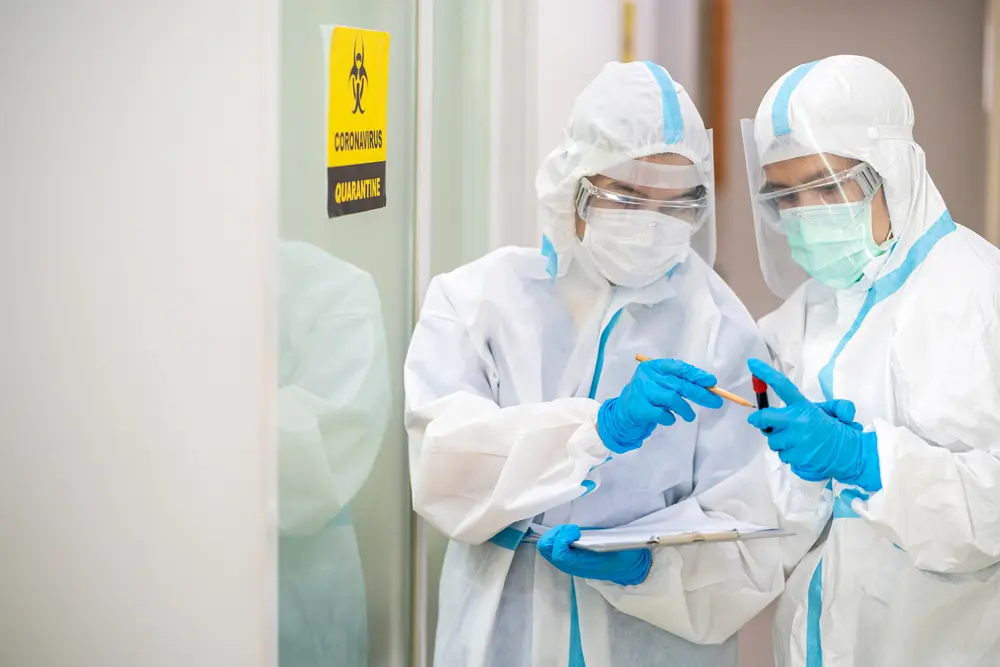I will never forget the first time I called a code blue for a patient under my direct care as a critical care nurse in an adult medical-surgical ICU over a decade ago.
I remember snippets of this experience as though seeing it again from afar. The rushed admission of the patient from the medical floor. The floor nurse walking backward away from me with her hands up as I continued to ask her questions about the patient’s condition. The unprepared room. Calling for help after the patient became unconscious and hearing a colleague respond but not enter the room. Pulling the code blue alarm. Everyone rushing in to perform advanced cardiac life support. The pulmonologist stepping in the room to lead the code.
The patient died from a massive pulmonary embolism despite our best efforts. The grief and shock of the family member punctuated the overwhelming moment after the patient’s death.
But this was not the end. I experienced a glimmer of hope and optimism for future patient care from this event that would not have been possible without the charge nurse’s support after the event. The charge nurse provided extraordinary support for me that was not required of her, but made a huge impact on me as a nurse. She led me to an empty room on the unit to counsel me. I debriefed with her in tears. In her wisdom, she understood that debriefing was valuable so that I could discuss what happened and voice how the process could be improved for the future. The charge nurse even gathered the unit staff members later in the shift so that we could debrief as a group about what happened and what could be improved. This was all conducted in a non-judgmental environment under her leadership.
I am sharing this personal experience to illustrate the lasting impact of nursing leadership in supporting their staff nurses during and after crises. This applies to leading our nurses during this pandemic and into the future. Nurses facing the COVID-19 pandemic do not just need, but require, extraordinary support from charge nurses and nurse managers to provide optimal patient care. This support needs to be intentional, consistent, and implemented at the organization-level.
Exceptional nursing leadership and support should be an institutional expectation during the COVID-19 pandemic. Plentiful global evidence supports that better nurse work environments are associated with better outcomes for nurses and patients. The nurse work environment, defined as “the organizational characteristics of a work setting that facilitate or constrain professional nursing practice,” has five domains—nurse manager ability, leadership, and support of nurses; staffing and resource adequacy; collegial nurse-physician relations; nursing foundations for quality of care; and nurse participation in the hospital’s affairs.
The nurse manager plays an important role in leading and supporting direct-care nurses during the COVID-19 pandemic. Much needed attention is being given to the procurement and use of masks, gloves, and other supplies needed for the pandemic, which is an essential component to reduce infectious disease transmission. Less attention, however, is being given to the nurse manager’s broader role in providing consistent support (in addition to personal protective equipment) for personnel in the midst of this pandemic, which is also needed to promote safe patient care. Therefore, I have compiled actionable, evidence-based strategies to improve the nurse manager’s ability, leadership, and support for nurses to promote safer care during the COVID-19 pandemic.
- Measure and monitor the nurse work environment. Nurse managers can assess their work environment by requesting staff nurses to rate the work environment using the 31-item PES-NWI measurement tool. The PES-NWI is a National Quality Forum endorsed measure that is valid and reliable. Results could inform nurse managers about areas of the work environment that need improvement. Data collected can be compared to benchmark data in the literature and serve as evidence for requesting resources needed during this pandemic.
- Establish meaningful communication with staff nurses. Nurse manager should check-in and debrief with charge and staff nurses about their patient care concerns and needs on a regular basis. This includes encouraging staff nurses to report concerns about the work environment on an ongoing basis in a blame-free Specific examples include encouraging charge nurses to check on the well-being of staff nurses before each shift and reminding personnel to respond to nurses needing immediate assistance during patient care regardless of formal patient assignment. This recommendation is based on the AACN’s standard to engage in “skilled communication” to establish and sustain healthy work environments.
- Consider patient needs and nurse abilities for staffing the unit. Given the rapid, ever-changing nature of the COVID-19 pandemic, nurse managers need to account for changing patient conditions and assign the most suitable nurse available for patients requiring critical care. The needs of the nurse should also be taken into consideration, and if a nurse is exhausted from multiple shifts, a plan should be enacted to rotate patients to nurses who are also prepared and capable for this role. This recommendation is consistent with the AACN’s Synergy Model, which supports assigning nurses to patients based on patient needs and nurse abilities for optimal patient outcomes.
- Collaborate with hospital administrators. Nurse managers are in a unique position to combine all available evidence about the condition of their unit’s nurse work environment and communicate needs to hospital administrators. Nurse managers can gather evidence from the three previous strategies—surveys, conversations, and observations of patient care and nurse needs—to build a case for budgeting in required supplies and personnel to care for patients during this pandemic. Collaborating with hospital administration is consistent with “true collaboration”, which is supported as an AACN essential standard of care.
Nurse manager ability, leadership, and support are essential to supporting the nursing workforce during this challenging time while caring for patients in the midst of the COVID-19 pandemic. The strategies presented in this article can help nurses in their most challenging moments, just as the charge nurse did for me as a staff nurse over a decade ago. These principles were true then, and now more than ever, as we face this challenge together.
Jessica G. Smith is an assistant professor in the college of nursing and health innovation at the University of Texas at Arlington.
References
Aiken LH, Sloane DM, Clarke S, et al. Importance of work environments on hospital outcomes in nine countries. Int J Qual Health Care. 2011;23(4):357-64.
American Association of Critical-Care Nurses. AACN standards for establishing and sustaining healthy work environments: A journey to excellence. 2nd ed. aacn.org/WD/HWE/Docs/HWEStandards.pdf; 2015.
Hardin SR, Kaplow R. Synergy for clinical excellence: The AACN synergy model for patient care. Sudbury, MA: Jones & Bartlett; 2005.
Lake ET, Sanders J, Duan R, Riman KA, Schoenauer KM, Chen Y. A meta-analysis of the associations between the nurse work environment in hospitals and 4 sets of outcomes. Med Care. 2019;57(5):353-61.
Lake ET. Development of the practice environment scale of the nursing work index. Res Nurs Health. 2002;25(3):176-88.
Livingston E, Desai A, Berkwits M. Sourcing personal protective equipment during the COVID-19 pandemic. JAMA. 2020. jamanetwork.com/journals/jama/fullarticle/2764031
National Quality Forum. Practice Environment Scale-Nursing Work Index. (PES-NWI) (composite and five subscales). April 14, 2020. qualityforum.org/QPS/3450; 2019


















